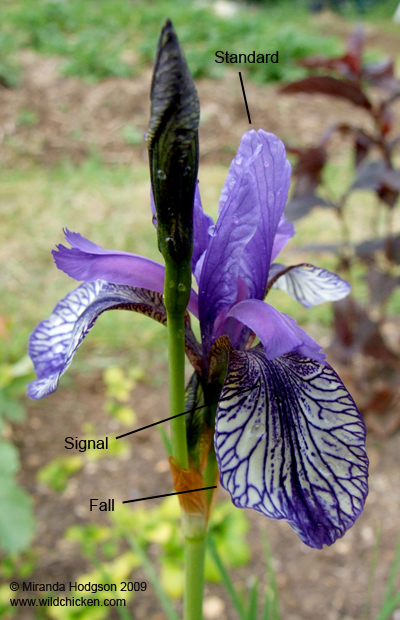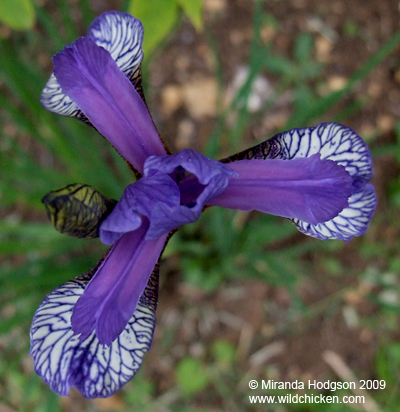


Iris sibirica 'Flight of Butterflies' (also called Siberian iris 'Flight of Butterflies')
Iris
sibirica
'Flight of Butterflies'
Hardy, rhizomatous, clump-forming perennial, grown for showy flowers that open in late spring to early summer. Tolerant of damp sites.
Attractive to bees and bumblebees, the veining (also called the 'signal') on the sepal (also called the 'fall') acts as a route marker and landing pad to help guide the bees to the pollen.
Flower in late spring to early summer.
Habit - upright, clump-forming. H: 90cm
Stem - narrow, green, carrying up to six flowers each.
Leaves - grass-like, grey-green, usually shorter than the flowering stems.
Flowers - up to 8cm across - upright, purple standards held above drooping falls, which are white and heavily veined in purple and tinged with yellow at the base.
Full sun to partial shade.
Moist or moisture retentive.
Hardy.
Divide clumps every few years. When congested clumps produce fewer flowers, develop open centres and are also more prone to attack by aphids.
Susceptible to snails, slugs and thrips.
Divide when dormant from mid-summer to early autumn.
Garden Plant Information list of plant care info by botanical name